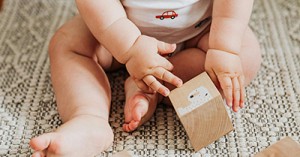Effective communication is at the heart of every productive workplace but more so in sectors like ECE where so much depends on positive interactions between key stakeholders, like children, educators, families, management and providers. Non-verbal cues are an integral part of communication as they can complement and reinforce but also contradict and undermine verbal messages. The following article provides information on What Is Non-Verbal Communication, Why It Is Important, How To Use Non-Verbal Communication In The Workplace and more.
What Is Non-Verbal Communication?
Non-verbal communication is a way of sending and receiving messages without using words. Also called manual or body language, it is a way of conveying a message using varied physical cues like facial expressions, gestures, postures and so on.
Why Is Non-verbal Communication Important?
Non-verbal communication takes place on a more unconscious level as compared to verbal language, especially when our minds are occupied. Some such cues may be slouching posture in a meeting or a furrowed eyebrow during a discussion. It is extremely important to be aware of such body language as the former can display a lack of confidence and the latter can convey confusion. On the other hand, steady eye contact and controlled gestures can be a powerful way to communicate one’s professionalism and authority.
Non-verbal communication can again go a long way in motivating colleagues and subordinates. Leaders know how to use body language like eye contact and positive expressions to foster trust and loyalty in people, which in turn enhances productivity at the workplace.
How To Use Non-verbal Communication
Here are some ways you can enhance non-verbal communication at your workplace.
Eye Contact
Making eye contact is one of the simplest ways to engage people positively as an open direct gaze while speaking is associated with higher trustworthiness. On the other hand, people who look away or dart surreptitious looks come off as shifty and unreliable. At the same time though, don’t stare or look hard as it can make people uncomfortable – a good rule of thumb when speaking to someone is to look directly into their eyes at least two to three seconds before looking away or moving to the next person.
Positive Facial Expressions
Your facial expressions should be appropriate for the context – like a broad smile when wishing a colleague their birthday or a slight smile when engaging your audience at a presentation. Even in serious contexts like meetings, you can radiate positivity by adopting a relaxed expression rather than coming off as tense and anxious.
Purposeful Gestures
What you are doing with your hands, fingers and legs can convey a lot about your state of mind as well as your attitude to others. For example, finger-pointing, fidgeting, tapping, playing with hair, wringing hands and twisting a ring can express restlessness besides being distracting to others. While appropriate hand gestures can be used to add meaning and display strength of personality, too much waving about or slicing the air can again come off as unsettling. Hand gestures can also express friendliness or appreciation, like waving to someone from across the room to greet them or giving them a thumbs up to express a job well done after a presentation
Be Attentive
To appear open and approachable to colleagues, keep your arms and legs uncrossed. When speaking with a person, point your toes and square your shoulders toward them. If someone else is speaking to you, turn yourself towards them with a slight smile and gently lean in. such gestures along with easy eye contact convey that you are attentive and engaged. Equally importantly, avoid multi-tasking during the interaction - checking e-mail, looking at your phone or typing a text or disengaging shows disinterest and disrespect.
Confident Handshake
Practice your handshake well as it can make or break first impressions. See that your hand or fingers are not sticky or sweaty, make full palm-to-palm contact shake up and down once or twice. For the ideal handshake, a firm but gentle grip works best, lasts two to three seconds and does not go on longer than the verbal introduction.
Posture and Presence
How you carry yourself in the workplace can convey volumes about your professional and leadership qualities. Avoid slouching when sitting or perching rigidly on the edge of the seat – the former makes one come off as lazy or disengaged while the latter conveys anxiety. Instead, sit with your shoulders relaxed with your body firmly supported by the back of the chair. Similarly, avoid hunching your shoulders or shuffling when walking; when standing, be sure to stand up tall and straight to express your self-assurance and energy.
Respect Personal Space
Among the frequently overlooked aspects of non-verbal communication is how one negotiates space in the workplace. Intruding in someone’s personal space can make you appear intimidating or interfering – even when you have no such intentions, a colleague may feel uncomfortable if you are leaning or standing too close to them. At the same time, if you never reach out to others – like by meeting them halfway in the corridor or leaning forward when they are saying something, you may come off as distant and unapproachable. As in most cases, the right degree of space will be determined by the exact context and the nature of your interpersonal dynamics.
Follow Dress Code
Most workplaces have official or unwritten but commonly agreed-upon dress codes. An ECE service may have a distinct work dress or broad norms for dressing. It is best to follow these since a dress code is not only about visually upholding the values and philosophy of your service but also about practicality and ease of functioning. The other important aspect of dressing is a neat, “put-together” look including well-groomed hair, clean nails and feeling fresh.
Practice Congruence
The most effective way to communicate trust and professionalism is to have verbal and non-verbal communication complement each other. This is because when the verbal message is inconsistent with non-verbal cues, people are more likely to believe the non-verbal cues. For example, if you are unhappy with a colleague’s proposal, faking approval with words can clash with subtle non-verbal cues like a clenched fist or a strained smile. Instead, look for positive ways to clarify your doubts about their plan so that all sides have a better understanding when working together. Similarly, watch out for the mismatch between verbal and non-verbal messages in your colleagues. A perspiring forehead or a smile that doesn’t reach the eyes can often tell you more than what their words convey.
Be Alert To Vocal Cues
Along with body language, vocal cues are another important aspect of non-verbal communication and include voice tone, pacing, pausing, volume, inflection, pitch and articulation. Such cues can communicate important meanings according to how words and phrases are spoken, for example, high-pitched voices and rapid speech can convey a nervous or restless state of mind. So to express your professionalism at the workplace, practice speaking at a moderate pitch, pleasant tone and even pace. A good idea to go about this is to record some of your regular conversations and then decide on what you might want to change.
Be aware of cultural meanings
Non-verbal cues that may be welcome in one culture may appear inappropriate in another. So in multicultural contexts, it is a good idea to find out how to communicate respectfully. For example in Australia, a handshake is a common form of greeting and a hug can be a way for long-time colleagues to show they are happy to meet after the summer break. However such gestures may not be welcome in other cultures, especially between members of the opposite sexes. Thus building your cultural competence is an important way of improving non-verbal communication in the workplace.
Workplace communication fulfils both functional and relational purposes. For workplaces to be productive, their staff must know how to communicate to get their job done and also how to get along with each other. Non-verbal cues play a significant role in both aspects of workplace communication. For example, active listening cues - like eye contact and slight nodding - between educator and child is a key element of professional communication in the ECE setting but such body language also nurtures interpersonal relationships among educators which in turn is crucial for successful work environments.
References:
Non-Verbal Communication Matters, Forbes
Non - Verbal Communication, Indeed
Top Bad Handshakes, Very Well Mind







 As an Educator in Australia, your pay rate falls under the Children’s Services Award 2010. This award states the minimum amount that an employer can
As an Educator in Australia, your pay rate falls under the Children’s Services Award 2010. This award states the minimum amount that an employer can When working as a qualified Early Childhood Teacher (with a university degree) within a service, your rate of pay will come from the Educational Services
When working as a qualified Early Childhood Teacher (with a university degree) within a service, your rate of pay will come from the Educational Services When working as a Diploma Qualified Educator your pay rate is from the Children's Services Award 2010. This Award states your minimum rate of pay
When working as a Diploma Qualified Educator your pay rate is from the Children's Services Award 2010. This Award states your minimum rate of pay When working as a Cert 3 Qualified Educator, your pay rate is from the Children's Services Award 2010. This Award states your minimum rate of
When working as a Cert 3 Qualified Educator, your pay rate is from the Children's Services Award 2010. This Award states your minimum rate of Educational Leaders play a crucial role in their early childhood service by ensuring that the educational program aligns with best practices and supports the holistic
Educational Leaders play a crucial role in their early childhood service by ensuring that the educational program aligns with best practices and supports the holistic In early childhood education and care, ratios are more than a technicality—they are a frontline safeguard. Every child deserves responsive supervision, emotional connection, and developmental
In early childhood education and care, ratios are more than a technicality—they are a frontline safeguard. Every child deserves responsive supervision, emotional connection, and developmental Here’s a comprehensive Mobile Phone and Smart Watch Policy tailored for early childhood education and care (ECEC) services in Australia, aligned with the latest 2025
Here’s a comprehensive Mobile Phone and Smart Watch Policy tailored for early childhood education and care (ECEC) services in Australia, aligned with the latest 2025 With the new national child safety reforms kicking in on 1 September 2025, early childhood services like yours have a real opportunity to lead the
With the new national child safety reforms kicking in on 1 September 2025, early childhood services like yours have a real opportunity to lead the The Sea of Fish Challenge is a national initiative that invites children, educators, families, and communities to create and display fish artworks as a symbol
The Sea of Fish Challenge is a national initiative that invites children, educators, families, and communities to create and display fish artworks as a symbol Across the early childhood education and care sector, educators are sounding the alarm: current staffing ratios are insufficient to deliver safe, meaningful, and developmentally appropriate
Across the early childhood education and care sector, educators are sounding the alarm: current staffing ratios are insufficient to deliver safe, meaningful, and developmentally appropriate


